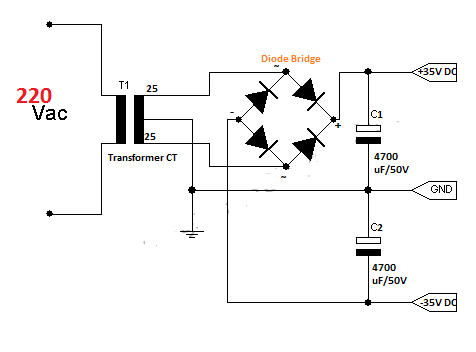That makes this microcontroller family of widely used people are :
- Have a Flash, a EEPROM, and a SRAM are all in one IC, so that in certain applications do not require external memory.
- Program execution faster because nearly all instruction is conducted in only one or two clock cycles different with MCS-51, which performs instruction in 12 clock cycles.
- Has many useful features, for example on ATMEGA8535, look at features
The Minimum System of AVR
The minimum system circuit is a minimal circuit where a microcontroller chip can work (running). Circuit is called minimal because of the use of hardware components that are used are the most minimal requirements for a processor to work. Actually AVR ATmega chip is equipped with an internal oscillator, so, to save costs (cost), no need to use a crystal / resonator external to source clock the CPU. But for good performance or we apply to projects that require a different oscillator with internal oscillator chip so we must use an external oscillator.
List of Components:
Name
|
Value
|
Quantity
|
uC (AVR)
|
ATMega8535/32
|
1
|
crystal
|
12Mhz
|
1
|
capacitors
|
30pF
|
2
|
elco
|
10uF
|
1
|
resistors
|
470
|
2
|
led
|
1
|
|
voltage regulator
|
LM7805
|
1
|
pin header
|
see pictures
|
|
If you have a downloader (serial or parallel), connect to the MISO. MOSI, SCK, RESET on the microcontroller (J1 in minimum system). Then to flash the program into the AVR can use the software ISP flash-programmer v.30a. (free download)




 08:37
08:37
 Unknown
Unknown




















